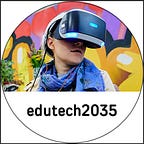Artificial Versus Human Intelligence: Learning Solutions In The Global Digital Economy
The digital economy has risen to prominence in discourse amongst think tanks, researchers and corporations, and has climbed to the top of government and business agenda. Increasingly and collectively, the world is recognising the digital economy as the chief driver of growth and development and is directing investment accordingly.
Behind this digital push exists new technologies - which have brought with them new challenges. One of the main challenges the world is faced with is how to allow for a seamless transition into the new technological world. A successful digital transition is almost entirely dependent on competent human capital.
It is reasonable to suggest that the best way to prepare for technological change is by using technological strategy. Artificial Intelligence solutions include comprehensive and intuitive machine learning tools that allow for faster, better and smarter decision making. But does this mean we should ever negate the role of human intelligence all together?
In Competition or In Combination?
The space between artificial intelligence and human intelligence is characterised by a functional and highly affiliated relationship. Many have questioned whether the current technological state situates us in a place of immortality or extinction. Perhaps the answer to this ponder is neither. The question isn’t ‘who will win?’ but rather, how are they linked and can they co-exist?
If AI is the term used to describe the simulation of human intelligence processed by machines, including learning, reasoning and problem-solving, can we truly separate AI from HI? Ultimately, AI is nothing but a simulation of HI and would cease to exist without human input.
One catastrophic demonstration of the risks we face when leaving artificial intelligence to its own devices took place in 2018. A self-driving Uber test car struck and killed a person on the road. Based on this case alone, we can say that AI still lacks human input- and probably always will.
Niche human qualities such as communication, creativity, empathy, questioning and strategic thinking, make the world go round. However, so too do efficiencies. For example, one doctor can make a diagnosis in ten minutes, and an AI system can make millions in ten minutes. Further, there is no risk of intelligent machines producing decisions and carrying our tasks based on biased opinions. AI can work for days on end and effectively generates the capacity for a productive, methodical and efficient global digital economy.
Most jobs that can be performed by humans have three essential elements: emotional intelligence, creativity and STEM education. The latter has joined forces with artificial intelligence to produce the perfect balance. Science, technology, engineering and mathematics each hold their own in academia and the workforce. But what happens when artificial intelligence technology steps in to intervene in the STEM education learning process?
Combined AI Learning Solutions
In an effort to provide human opportunities for professional development in an increasingly digitalised world, AI has become the basis that underpins the structure of a new learning model. University 20.35 has created an entirely new university model, whereby each participant at any given moment makes a decision based on the recommendations that take into account their digital footprint, that of others and their use of the educational content available to them.
The collection of Big Data on participants professional and educational backgrounds, in combination with the analysis of student activity, enables the university model to create and recommend the best development path to be followed.
Each participant’s digital footprint is collected during STEM educational processes to confirm the students’ skills. Using the digital footprint, the university model can detect gaps in knowledge to successfully confirm that a trajectory module tutor is efficiently able to transfer knowledge to the students. Through this transfer of precise and required knowledge, we realise truly impeccable efficiency gains. Less time and energy is allocated to transferring skills and knowledge that is already established.
Another way artificial intelligence and human intelligence can work together and learn from each other is via the development of a digital twin. University 20.35’s model of learning has the capacity to generate one for each student. An educational digital twin is essentially the replica of the students own physical profile. This near to real-time digitalisation of the student’s knowledge and skills can be modified to take into account lost information (forgetfulness) and enhanced skills (practising and established skills). By digitalising the student’s profile, a proactive educational program can be modified for best practice.
In other words, artificial intelligence allows us to aggregate those fragments of ourselves into a comprehensive model that better represents us. When we as humans work with AI, we can improve the mutually beneficial relationship that already exists. In most cases, AI solutions will continue to rely on humans for their initial datasets. The further development of artificial intelligence, solutions will most likely see its ability to gather and grow its own data. Whilst this may mean AI will become less dependent on humans for knowledge transfers, the need for human intelligence will never go amiss. Rather, we can anticipate the emergence of a more symbiotic relationship where both modes of intelligence are dependent on each other to produce the best possible results.
Source: https://datafloq.com
